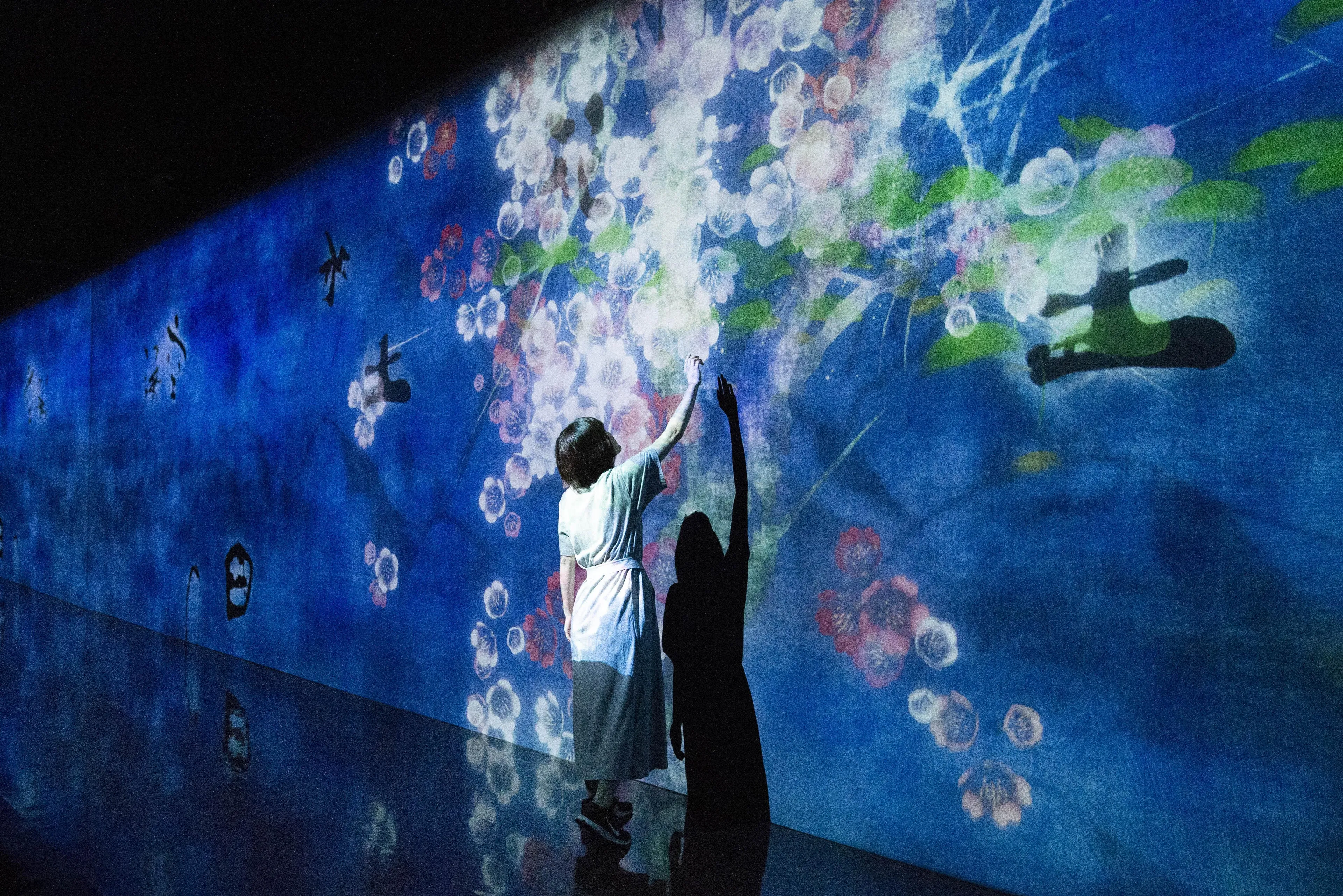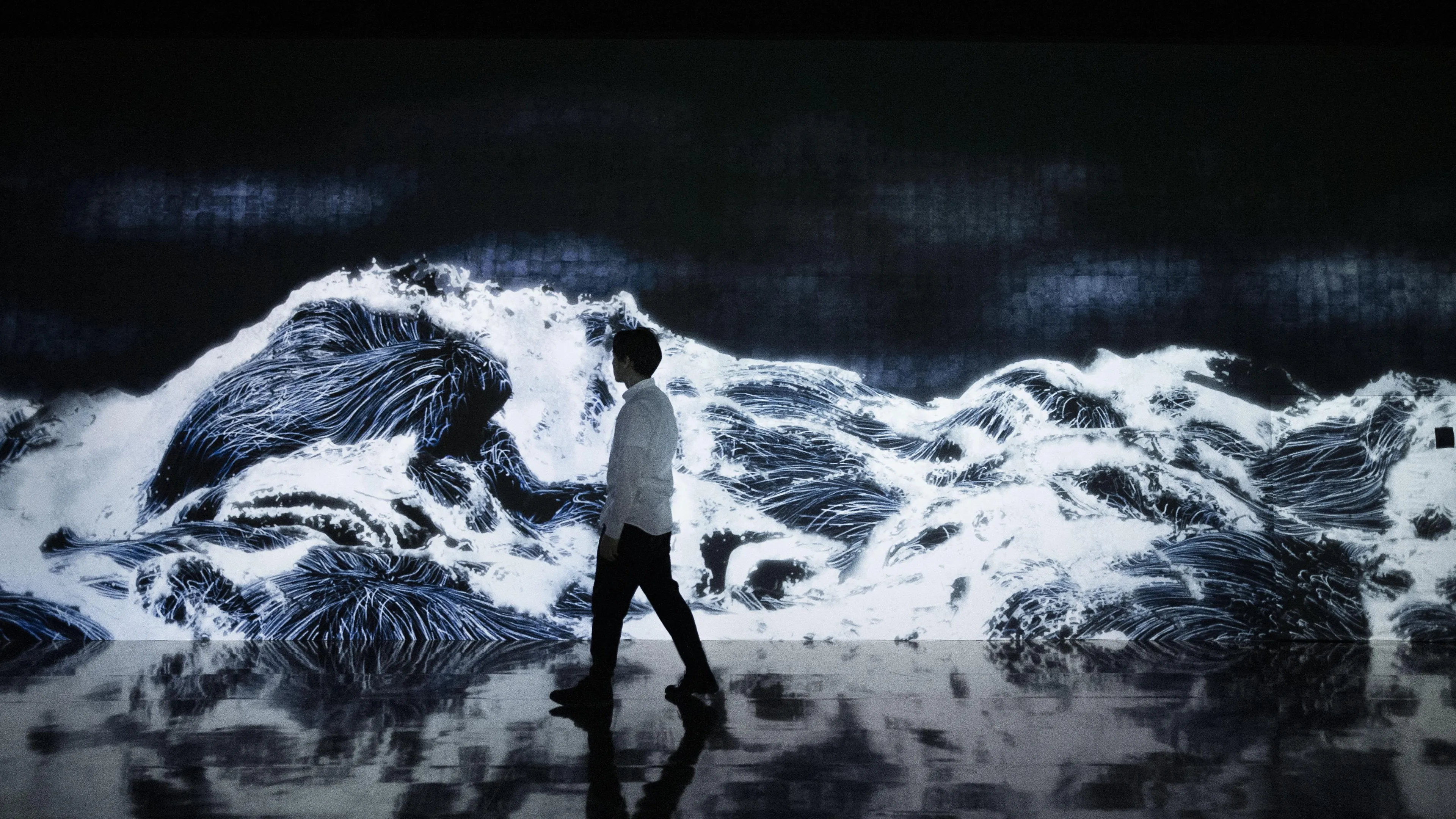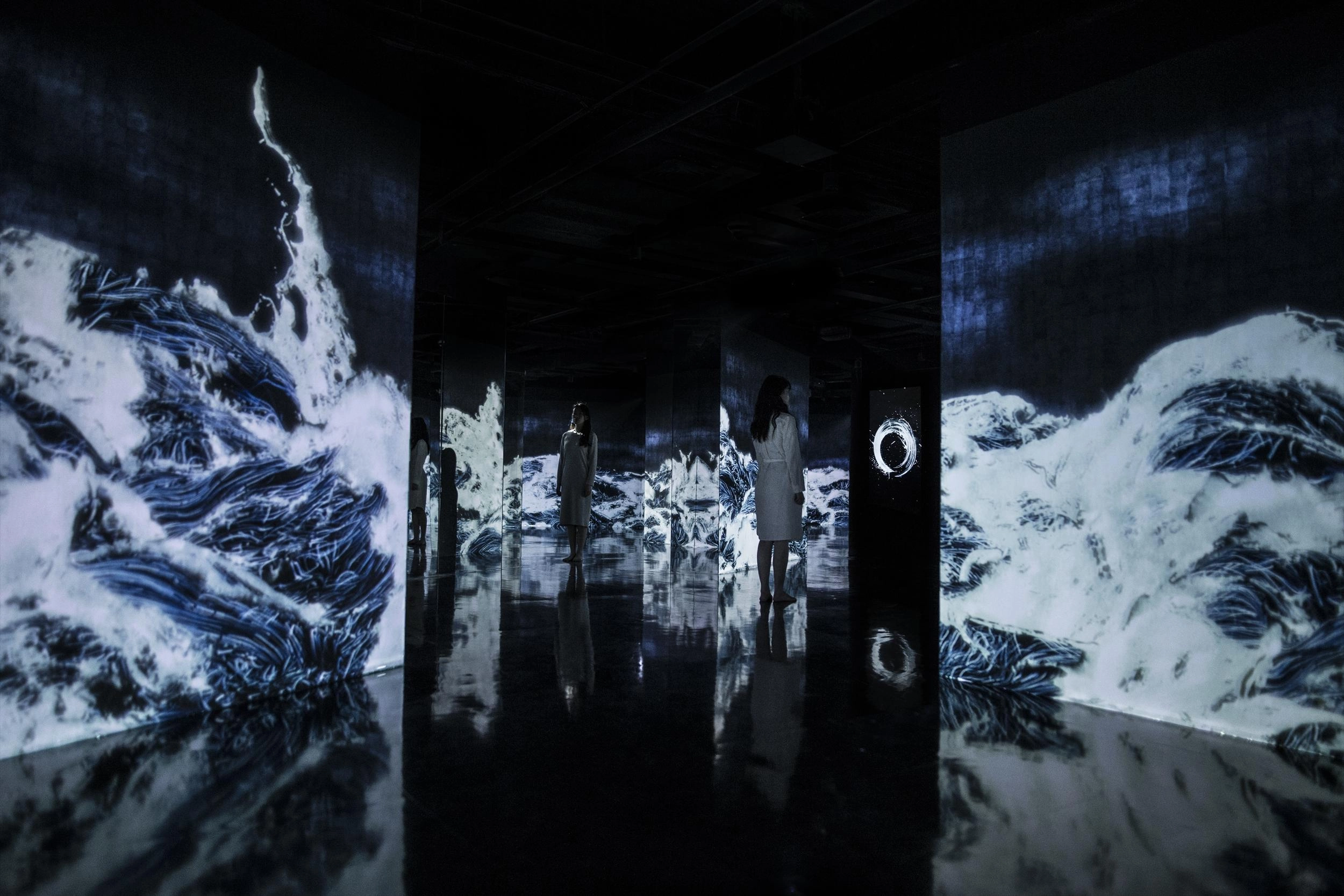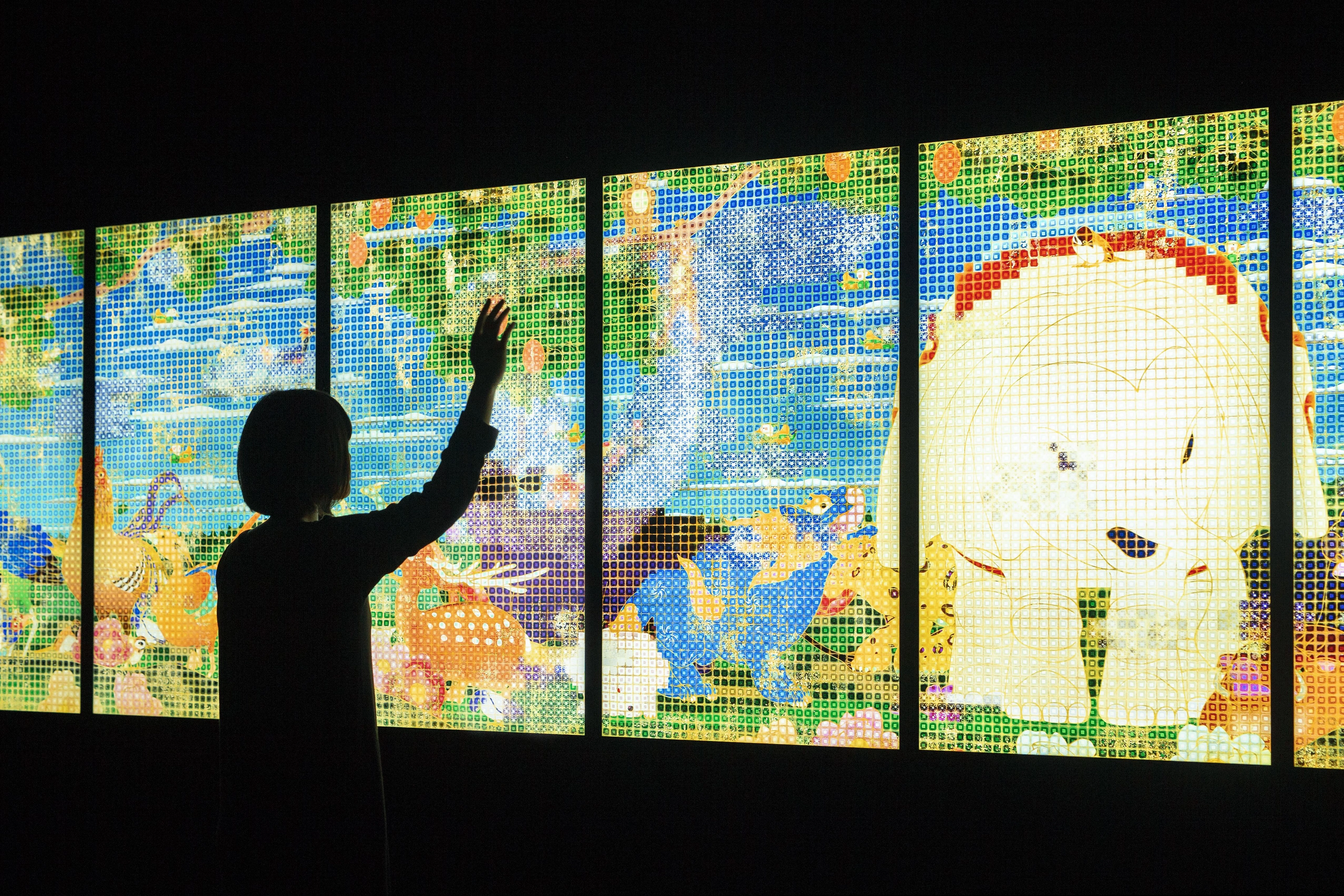teamLab: Born From the Darkness a Loving, and Beautiful World | teamLab
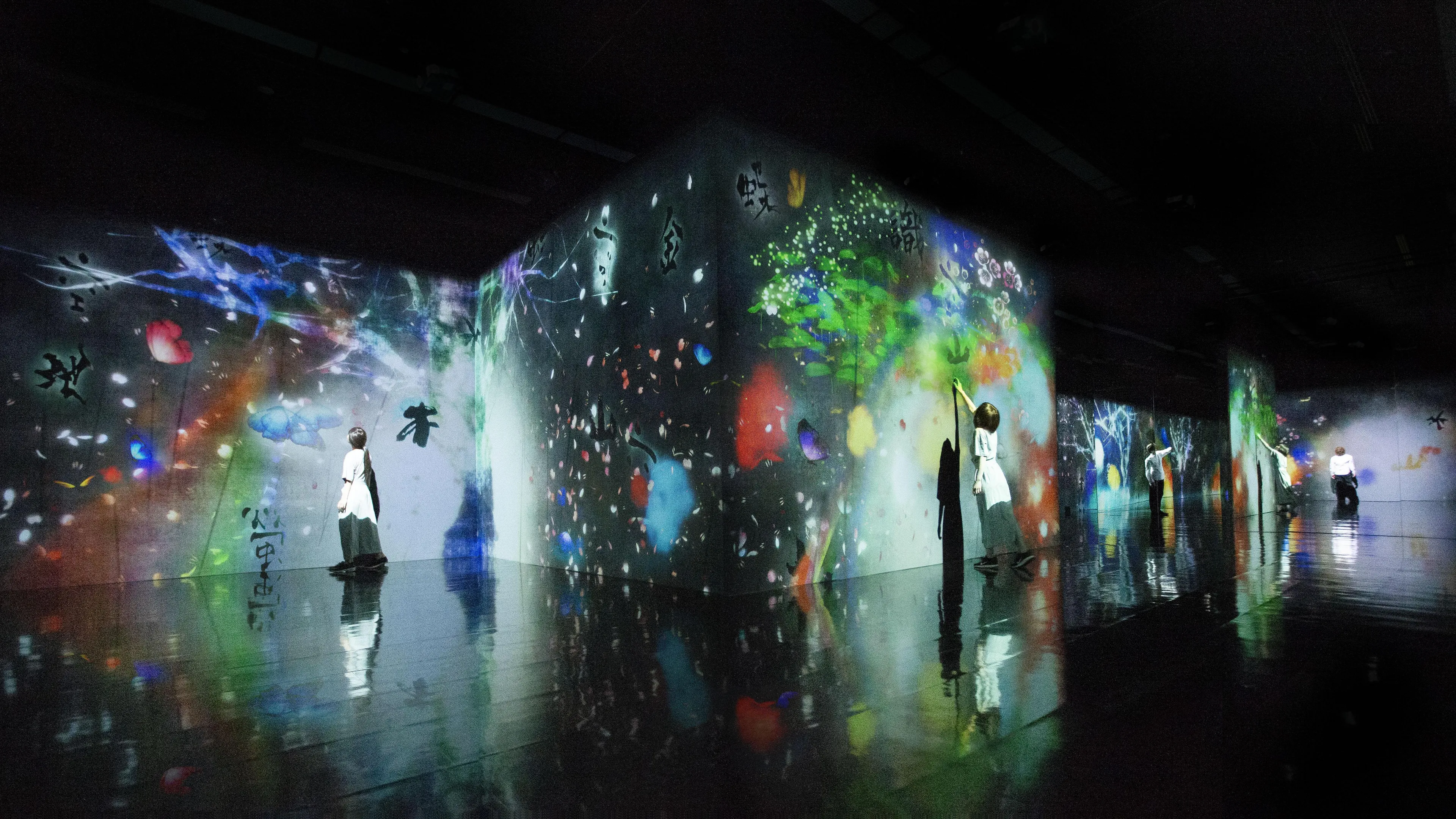
teamLab: Born From the Darkness a Loving, and Beautiful World
PAST EXHIBITION
Apr 20 - Jun 16, 2019Himeji City Museum of Art, Hyogo

teamLab: Born From the Darkness a Loving, and Beautiful World
PAST EXHIBITION
Apr 20 - Jun 16, 2019Himeji City Museum of Art, Hyogo
Artworks
About teamLab
teamLab (f. 2001) is an international art collective. Their collaborative practice seeks to navigate the confluence of art, science, technology, and the natural world. Through art, the interdisciplinary group of specialists, including artists, programmers, engineers, CG animators, mathematicians, and architects, aims to explore the relationship between the self and the world, and new forms of perception.
In order to understand the world around them, people separate it into independent entities with perceived boundaries between them. teamLab seeks to transcend these boundaries in our perceptions of the world, of the relationship between the self and the world, and of the continuity of time. Everything exists in a long, fragile yet miraculous, borderless continuity.
teamLab’s works are in the permanent collection of the National Gallery of Victoria, Melbourne; Art Gallery of New South Wales, Sydney; Art Gallery of South Australia, Adelaide; National Gallery of Australia, Canberra; Amos Rex, Helsinki; Museum of Contemporary Art, Los Angeles; Asian Art Museum, San Francisco; Borusan Contemporary Art Collection, Istanbul; and Asia Society Museum, New York, among others.
teamlab.art
Biographical Documents
teamLab is represented by Pace Gallery, Martin Browne Contemporary and Ikkan Art.
Venue Details
teamLab: Born From the Darkness a Loving, and Beautiful World
Term
Apr 20 - Jun 16, 2019
Hours
10:00 – 17:00 (Last Entry 16:30)
*From April 27 to May 6
10:00 – 18:00 (Last Entry 17:30)
*From April 27 to May 6
10:00 – 18:00 (Last Entry 17:30)
Closed
Mondays
*Open April 29 and May 6
*Open April 29 and May 6
Admission Fee
General Tickets
Adult JPY 1,400
High School / University Student JPY 1,000
Elementary / Junior High School Student JPY 600
Free for Preschool Children
Group Tickets (More than 20 people)
Adult JPY 1,200
High School / University Student JPY 800
Elementary / Junior High School Student JPY 400
Free for Preschool Children
Tickets are available at:
Play Guides and Continent Stores
- Ticket Pia (P code : 992-130)
- Lawson Ticket (L code: 53564)
- Seven Eleven
- e+
- Major Play Guide (e.g. CN Play Guide)
- Convenience Stores
Himeji City Museum of Art
*Only General Tickets (not Early Bird Tickets) are available onsite.
Adult JPY 1,400
High School / University Student JPY 1,000
Elementary / Junior High School Student JPY 600
Free for Preschool Children
Group Tickets (More than 20 people)
Adult JPY 1,200
High School / University Student JPY 800
Elementary / Junior High School Student JPY 400
Free for Preschool Children
Tickets are available at:
Play Guides and Continent Stores
- Ticket Pia (P code : 992-130)
- Lawson Ticket (L code: 53564)
- Seven Eleven
- e+
- Major Play Guide (e.g. CN Play Guide)
- Convenience Stores
Himeji City Museum of Art
*Only General Tickets (not Early Bird Tickets) are available onsite.
Exhibition Adviser
Fumio Nanjo
Art Critic, Director of Mori Art Museum
Art Critic, Director of Mori Art Museum
Special Cooperation
Pace Gallery
Takahashi Collection
Takahashi Collection
Notes
- Entrance restrictions will apply if the venue reaches capacity. Thank you for your understanding.
- Please note that contents are subject to change without notice.
- Please note that contents are subject to change without notice.
Contact
Himeji City Museum of Art
Tel. +81 79 222 2288
Tel. +81 79 222 2288
Access
Address
Himeji City Museum of Art
Special Exhibition Gallery
68-25 Honmachi, Himeji City, Hyogo, Japan
Special Exhibition Gallery
68-25 Honmachi, Himeji City, Hyogo, Japan
From JR Sanyo Electric Railway Himeji Station
Take Shinki bus [No. 3, 4, 5, 61, 62, 64, 81, 82, 84, 86] from platform 7 or 8
After approx. 8 minutes, get off at [Himeyama Park South, Medical Center, Himeji City Museum of Art] station.
20 minute walk from JR Sanyo Electric Railway Himeji Station.
For more information, please see here.
Take Shinki bus [No. 3, 4, 5, 61, 62, 64, 81, 82, 84, 86] from platform 7 or 8
After approx. 8 minutes, get off at [Himeyama Park South, Medical Center, Himeji City Museum of Art] station.
20 minute walk from JR Sanyo Electric Railway Himeji Station.
For more information, please see here.
Exhibitions Nearby

Spatial Calligraphy, Reversible Rotation and Crane - Itami Blue Light, Day & Night
Jul 24, 2019 - Permanent
Osaka International Airport (Itami) SAKURA LOUNGE, Osaka
Public Art
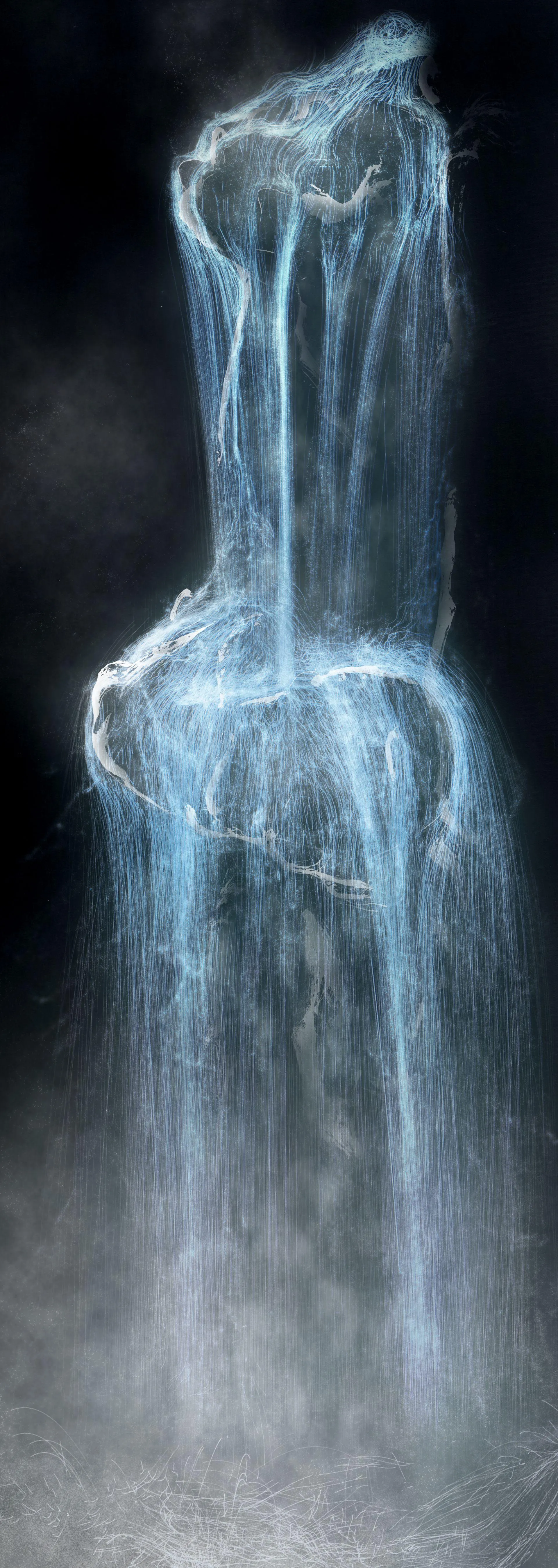
Universe of Water Particles
Jul 24, 2015 - Permanent
DOJIMA RIVER FORUM, Osaka
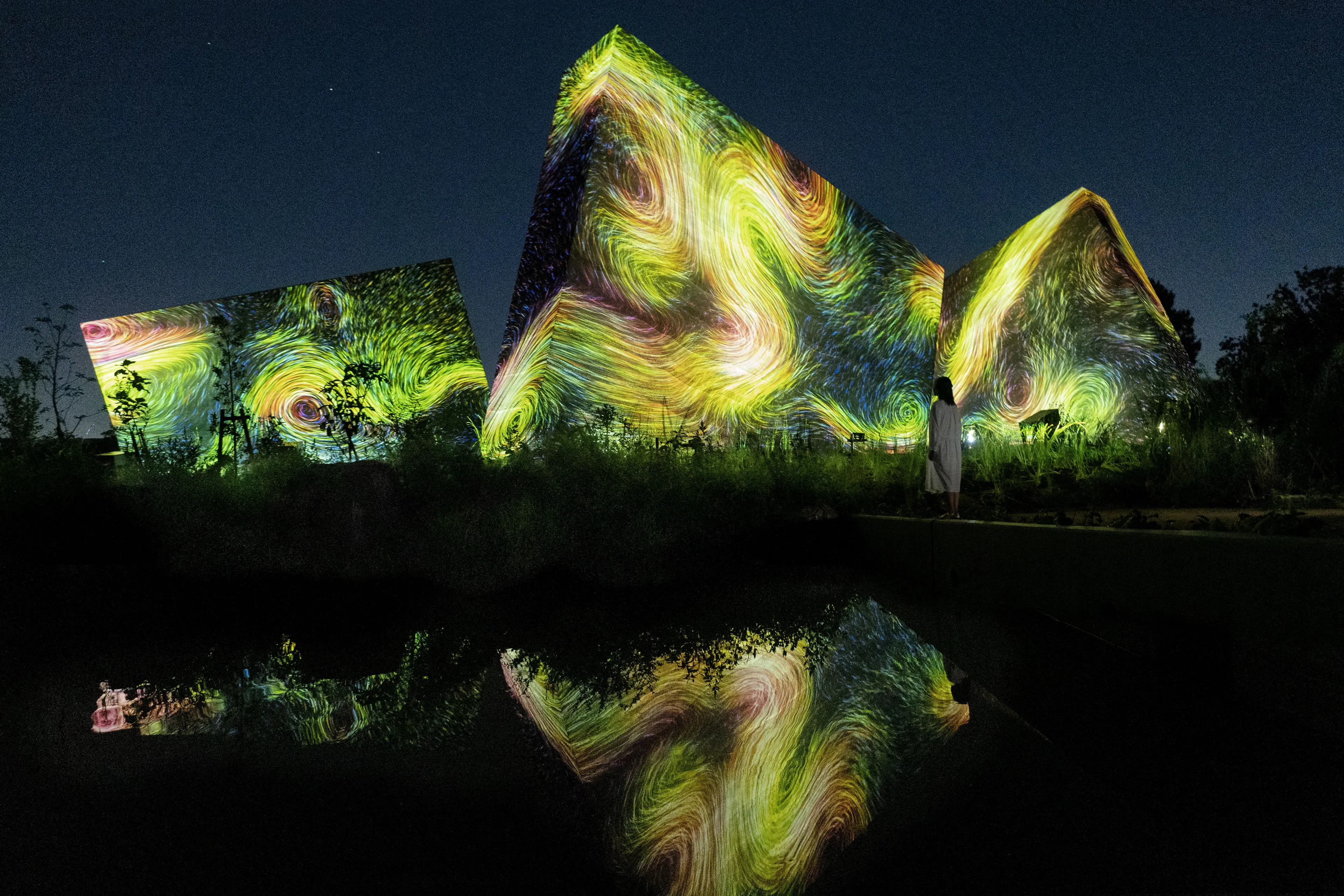
teamLab Botanical Garden Osaka
Jul 29, 2022 - Permanent
Nagai Botanical Garden, Osaka
teamLab Open Air Museum
